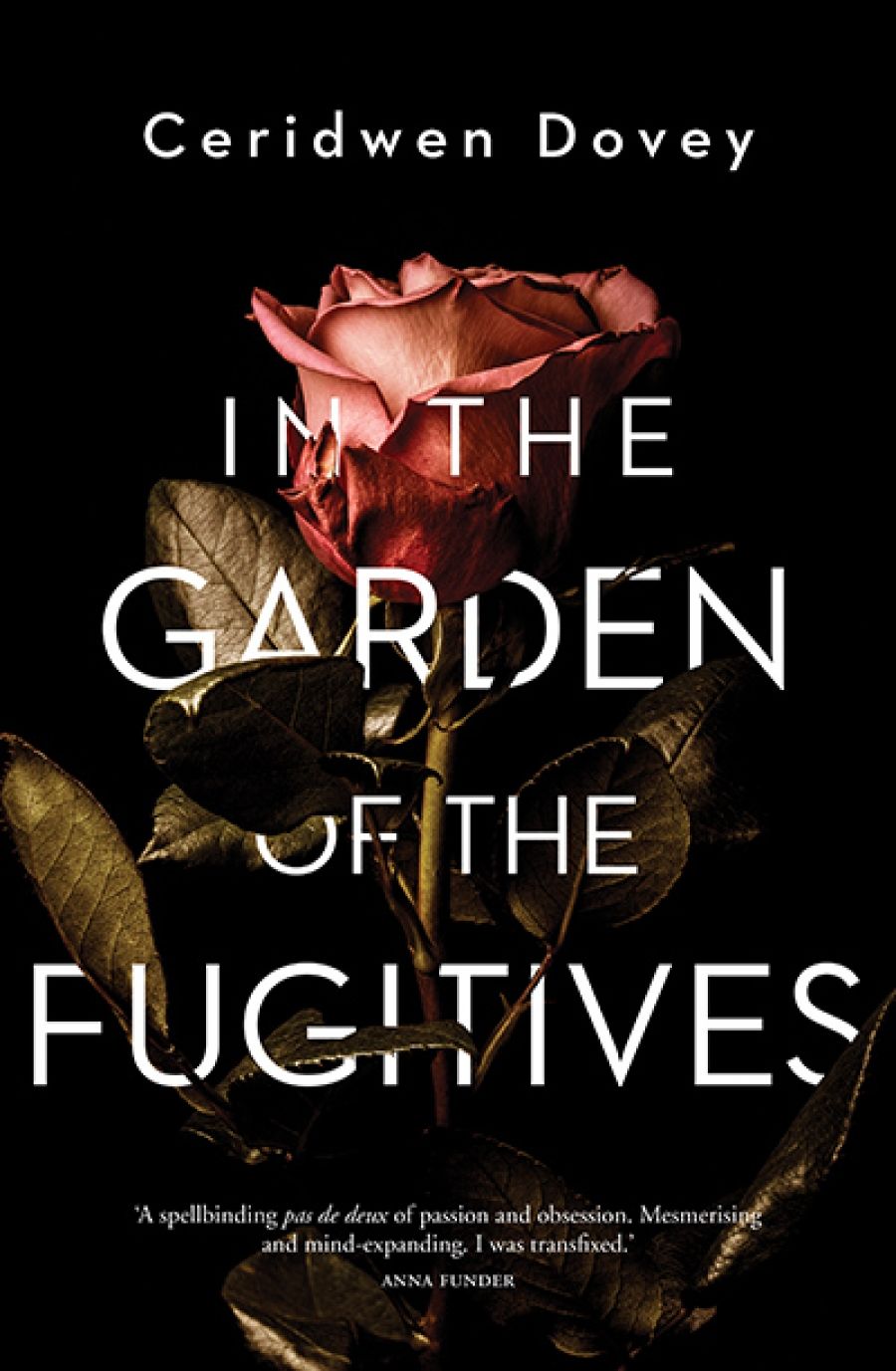
- Free Article: No
- Contents Category: Fiction
- Custom Article Title: Ashley Hay reviews 'In the Garden of the Fugitives' by Ceridwen Dovey
- Review Article: Yes
- Online Only: No
- Custom Highlight Text:
I was never brave enough to visit Pompeii, partly due to an overactive imagination that combined a sense of the ferocity of Vesuvius’s blast in 79 CE and the volcano’s ongoing muttering with thoughts of the city’s Roman residents, cauterised in the eruption: outstretched hands; a dog expiring mid-roll; a mother and her child ...
- Book 1 Title: In the Garden of the Fugitives
- Book 1 Biblio: Hamish Hamilton, $32.99 pb, 305 pp, 9781926428598
Kitty is the friend and focus – the obsession – of a rich young man called Royce. The now-elderly Royce provides one of this book’s two voices. He writes letters about Kitty and her work, her life and death, to another of his former protégées, Vita, a younger filmmaker. Vita, in turn, sends Royce missives about her own life and work; her failures, frustrations, lost love. That Kitty’s work revolves around Pompeii invites an abundance of metaphors to do with excavation and rediscovery, cataclysm and risk, death and threat. The book shimmers with layers of literary lapilli, the pumice pebbles that spew from volcanoes, entombing treasures in sites like this. At one level, it plays with the ways different generations recast and rewrite what they imagine might have happened centuries before. At another, In the Garden of the Fugitives is a book about desire: it is impossible, Royce suggests, ‘to experience a place like Pompeii outside the prism of your own desires’. Royce and Vita speak to many different and complicated desires – betrayals as much as seductions; points of yearning, sinister duplicity, pursuit.
Pompeii sometimes feels like a feint, a single famous instant that contrasts with the complexities and nuances of Vita’s story. Vita’s childhood was an ongoing shuffle between South Africa and Australia and their two colonial histories, before university delivered her to America and, ultimately, the munificence of the fellowship that Royce funds in Kitty’s memory. As an adult, she remembers worrying whether ‘my extreme self-consciousness about my identity would block some essential human connection’. Thus, the prism of her desires allows Dovey to reflect and refract questions of race and colonisation, of intergenerational complicity and guilt. These open the way for some of the most moving passages: on creative process, on communication and connection, on the very stuff of being human.
Dovey is an extraordinary writer. The delicacy of her plot’s intersections and correspondences complements the heft and challenge of the ideas her twinned narratives explore. Even the most fleeting concepts – like ‘pronoia’ (the obverse of paranoia), or ‘collective effervescence’ – resonate.
Against such beautiful vastness, Dovey adopts the epistolary form, with all its constraints. The only information we have about her two characters and their stories comes in the letters they write to each other; more often than not, one barely remarks on the other’s. Royce and Vita know more about each other than we can ever know, and there is also the inescapable sense that neither may be quite reliable. Dovey’s literary ground shifts and heaves, unstable. If fiction is, most simply defined, something that is made up, how far might that point be pushed, and what is not permissible out on the edges of created characters and narratives and forms?
‘We can fill in each other’s gaps,’ suggests Royce early in the correspondence, ‘and somewhere between us may lie the truth of ourselves.’ Which speaks again of liquid plaster poured into a body’s void.

(photograph by Shannon Smith)
A crucial character, only later excavated from the site of Vita’s life, is Magdalena, a psychotherapist who works with people’s experiences of the past – those who can simply acknowledge it; those who use it to remake their present; those who use it to recast a future. This book attempts all three, which makes for a challenging and occupying whole. Even the motes of fury and hostility that flit between Vita and Royce seemed to fly off the page now and then, leaving me feeling accused, unmoored. Reading this book demanded the exploratory vigour involved in navigating J.M. Coetzee’s work. At the book’s end (about which it is impossible to speak, and without which it feels impossible to fully frame what comes before), I turned straight around and went back in again.
If I tell you that Dovey made a film about South African wine farms, like Vita, and moved back and forth between South Africa and Australia, like Vita, I don’t mean to suggest that Dovey is Vita. ‘Who’, after all, is any fictional creature? ‘Who’ is Vita, or Royce? But I liked the image of an author excavating spaces in her own world and filling them with the liquid stuff of story. Through the resulting forms, Dovey has embodied and interrogated some of the most urgent matters that can face us.
The book remains now, rattling inside me, as unsettling as the unsafe Vesuvius, Europe’s one active volcano, with its overdue threat of explosion. You really never know what’s coming next.


Comments powered by CComment